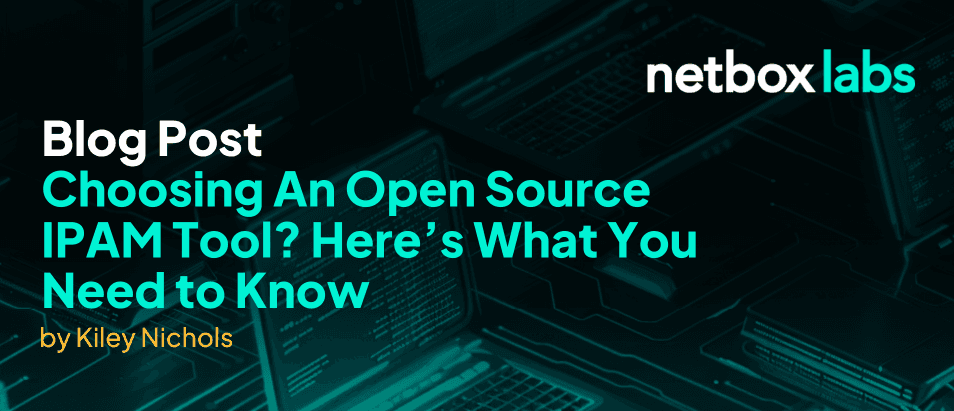Choosing An Open Source IPAM Tool? Here’s What You Need to Know

Selecting an IP Address Management (IPAM) tool can be confusing, especially if this will be your first time moving from spreadsheets to a tool that can plan, track, and manage your IP Addresses and subnets.
With so many vendors on the market and tools sounding similar, it can be difficult to determine which tool is right for you and your organization. It’s important to consider what your unique needs as an organization are, what levels of automation you plan to use, and how this tool will interact with the other tools you use for managing your network.
We recommend you consider the following questions when reviewing open source IPAM tools and determine what capabilities are most important to your team. Answering these questions will ensure you help choose the right IPAM tool for you and your organization.
Questions to Consider When Selecting An IPAM Tool
1. Are you looking for a moment-in-time glance or a holistic view of your network?
Many current IPAM tools provide an operational overview of your networks, meaning they show you the current state of your IP addresses – how many there are, where they are located, which are in use etc. This information is helpful of course, but it’s a moment in time glance at your network. More modern open source IPAM tools like NetBox demonstrate the ideal state of your network. Then, through automation, you can put in place methods to reach that state, and routinely check to ensure records are in line with that suggested ideal state.
2. How important is use of third party automation tools as part of your IPAM ecosystem?
As with other IT tool purchases, it’s important to consider what integrations the IPAM vendor you select offers. If your team has grown accustomed to using a specific automation tool, such as Anisble or Terraform, you’ll want to be sure that the vendor you choose integrates with those tools. Some IPAM vendors lock you into a proprietary form of automation. If using and experimenting with third party automation tools is important to, these vendors won’t be a fit.
3. How big of a community and customer base does the open source IPAM tool have?
The past few years have seen an increase in the number of open source and commercial IPAM tools available on the market. While many can sound alike, it’s important to understand the community and customer base behind each. Which vendors have publicly named customers? Which vendors have a growing community, whether it be open source or commercial? Are there peers you can turn to and ask questions beyond the commercial support team? Looking for proof of customer happiness and engagement is a must when selecting an IPAM tool.
4. What non-IPAM features might your team require?
While the goal of a good IPAM will certainly involve tracking IP addresses and subnets, it’s worth considering where IPAM data is useful outside of simply tracking. When you’re able to pair IPAM data with physical assets, your inventory takes on a completely different shape and feel – becoming more valuable outside of simply what IPs are used and where. What internet circuits are using which IP addresses or subnets and how can having that information help support react faster? What VLANs correspond to which subnet and which switches are supposed to have each VLAN? These questions get easier to answer when IPAM ties into other data sources.
5. What is your budget?
Smaller organizations or networking teams with limited budgets often consider starting with an open source IPAM tool, such as NetBox. Used by hundreds of organizations and tens of thousands of networking professionals, NetBox acts as a network source of truth so networking teams can automate against it. Today it is largely understood that any network with multiple subnets or users which assigns IP addresses dynamically – any mid-to-large enterprise network – must use an IPAM system, with enterprise-grade features for security, reliability and support.
Ultimately, the choice of which open source IPAM tool to use will depend on an organization’s specific needs and requirements. Regardless of which solution is chosen, moving from the use of spreadsheets to track IP addresses, to an automated IPAM system is a critical step in any organization’s network automation journey. The open source IPAM tools available today are valuable assets for network administrators.
To try out enterprise-grade NetBox for IPAM for free for two weeks, visit https://go.stg-netboxlabs-staging.kinsta.cloud/trial.
